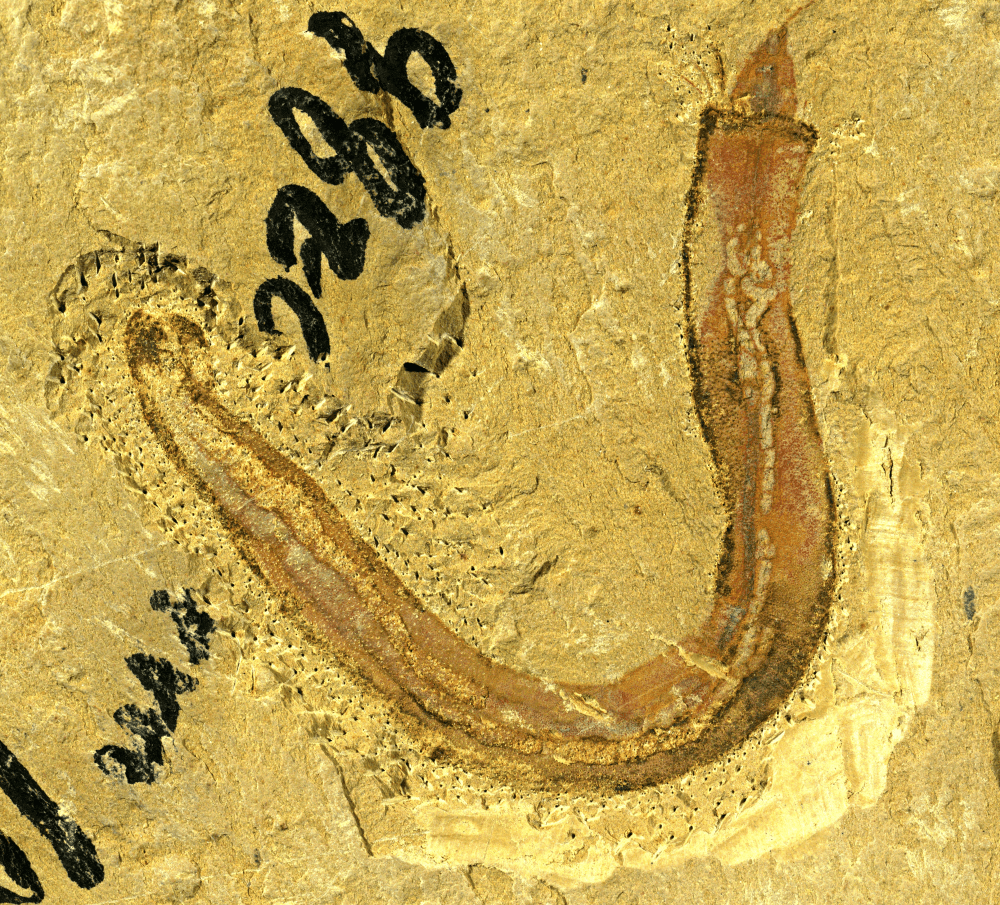Looking at an earthworm that’s been dumped on the street by a bird, you might not think much of the annelids, but the reality is these animals are one of the largest and most successful phyla of animals alive today. They’ve dominated both terrestrial and marine ecosystems, and now the analysis of some remarkably old and well-preserved specimens has revealed they emerged on Earth around 200 million years earlier than previously thought.
The discovery follows the analysis of fossils of the annelid worm Iotuba chengjiangensis, bizarre worms that date back 515 million years and look a bit like a chorizo stick with a party hat on top. As a cage worm, it would’ve ducked its head in and out of its bizarre tasselly bristle cage.
The fossils show evidence of a digestive system and kidneys in I. chengjiangensis, demonstrating to the researchers that they were surprisingly complex. It seems that the more complex body plan of other annelids emerged much earlier than expected, by about 200 million years, and that they didn’t miss out on the Cambrian Explosion as had been previously suggested.
“We know that the main animal lines we see today emerged during the Cambrian explosion, but we always thought annelid worms were late to the party, and their major subgroups didn’t begin to diversify until nearly 200 million years later,” said study co-author Dr Martin Smith of the Department of Earth Sciences, Durham University, in a statement.

“Ain’t no party like a Cambrian explosion party.” Image credit: Zhang Zhifei
“But the amazingly preserved fossils we have studied and the structure of these amazing little creatures challenge this picture, and show that annelid worms – including Iotuba chengjiangensis – seemed to follow the pattern of events initiated by the Cambrian explosion […] It turns out they weren’t late to the party at all, they were just hiding in a side room.”
The discovery of an annelid ancestor so early in evolutionary time indicates that there are many ghost lineages from the years that followed that we’ve yet to find.
“These families are like the top rungs on an evolutionary ladder,” explained Smith. “For these groups to have appeared so early in the day, there must have been a dramatic unseen origin of modern annelid diversity in the heat of the Cambrian explosion.”
“It turns out that many of the annelids we know and love today may have begun to evolve much sooner than we think.”
Gather your early birds, we’re going worm hunting.
The study was published in the journal Proceedings of the Royal Society B.
Source Link: Ancient Peperami Had A Surprisingly Complex Body For A 515-Million-Year-Old Worm